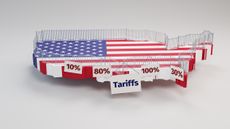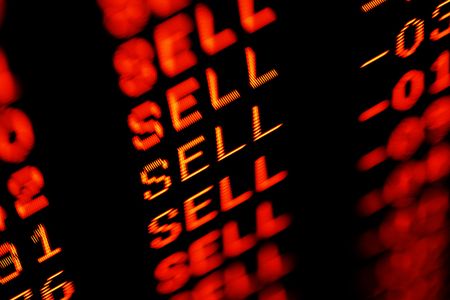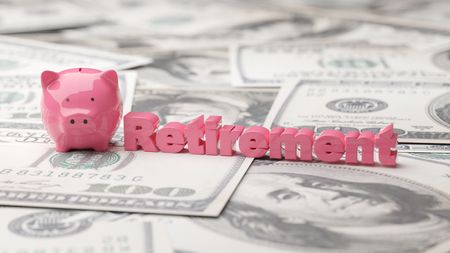Is Passive Investing 'Worse Than Marxism'?
A set-it-and-forget-it investing approach is certainly a pretty easy route for retirement savers to take, but it might be contributing to some big problems for portfolios, and even the market itself, down the line.

Passive investing is taking over the world. Okay, that's an exaggeration, but investment researchers at Sanford C. Bernstein & Co. say that nearly half of equity assets in the United States are passively managed, and the trend is growing. These same researchers called passive investing "worse than Marxism."
What exactly is passive investing, and why is it a problem? According to Investopedia, "Passive investing is an investment strategy that aims to maximize returns over the long run by keeping the amount of buying and selling to a minimum." Investors do this by purchasing index funds and exchange-traded funds (ETFs). So what's the problem?
Passive Investing Returns Fall Short
Index funds and ETFs have underperformed Standard & Poor's 500-stock index over the past two years, according to Steven Bregman, co-founder of Horizon Kinetics, an investment adviser firm with a "long-term, contrarian, fundamental value investment philosophy."

Sign up for Kiplinger’s Free E-Newsletters
Profit and prosper with the best of expert advice on investing, taxes, retirement, personal finance and more - straight to your e-mail.
Profit and prosper with the best of expert advice - straight to your e-mail.
Why? It could be simply the nature of these types of investments. When investors buy into an index fund, they're investing in a predetermined list of stocks. The managers of that index fund have to buy those stocks on the list without considering the valuation of those companies.
As Bregman says, the rise of passive investing "allows the herd to crowd assets and escalate their power without accountability to fundamentals." Does this sound a like a good idea?
A Factor in Bubbles and Flash Crashes
Worse yet, the rise of passive investing may be creating one of the biggest bubbles ever. A bubble can be defined as a situation where money flows in a certain direction without the movement being based on a valuation, which also seems to be one of the defining features of passive investing.
And there's another issue: Computers run index funds and ETFs. The computers buy whenever there's a dip. Those same computers sell when the trend turns the other way, and that can create an irrational panic where even more people sell. Remember the Flash Crash of May 6, 2010? That day the S&P 500 fell 7% in less than 15 minutes. This plunge was partly caused by computers selling off ETFs and index funds. Imagine the bubble—and the crash—if people continue to pour money into passive investing.
The Bottom Line for Investors
Passive investing has its champions. Index funds and ETFs can be low-cost, easy-to-buy, and well, passive—investors don't have to do anything more once they've bought in. But passive investing can also carry danger for individual investors, and maybe more importantly, for the market as a whole.
What Should You Do About It?
Be an active passive investor. Meaning that you should have a stop loss strategy for your equity holdings to protect against large losses when the inevitable bear market comes.
Also, don't forget to rebalance your portfolio quarterly so as to not become overweighted in one sector or index, which can increase your risk.
Get Kiplinger Today newsletter — free
Profit and prosper with the best of Kiplinger's advice on investing, taxes, retirement, personal finance and much more. Delivered daily. Enter your email in the box and click Sign Me Up.

Ken Moraif is the CEO and founder of Retirement Planners of America (RPOA), a Dallas-based wealth management and investment firm with over $3.58 billion in assets under management and serving 6,635 households in 48 states (as of Dec. 31, 2023).
-
 Trump's Sweeping New Tariffs Rattle Wall Street, Main Street
Trump's Sweeping New Tariffs Rattle Wall Street, Main StreetThe Kiplinger Letter Trump is promising that the short-term pain of steep new tariffs on imports will spark a manufacturing renaissance. But they pose major risks in the near term.
By Jim Patterson Published
-
 Why Does the Fed Prefer PCE Over CPI?
Why Does the Fed Prefer PCE Over CPI?Inflation has been top of mind for lots of folks in recent years. Most of Wall Street follows the CPI but the Fed favors the PCE. Here's why.
By Charles Lewis Sizemore, CFA Published
-
 How to Age-Proof Your Retirement Plan
How to Age-Proof Your Retirement PlanLongevity risk is a big threat to your retirement, but there are several strategies to protect yourself from running out of money, no matter how long you live.
By Nico Pesci Published
-
 Retirement Planning for Couples With a Generation Gap
Retirement Planning for Couples With a Generation GapDo you and your partner have different retirement timelines and attitudes to saving? It is possible to make plans together. This is how one couple did it.
By Phil Wright, Certified Fund Specialist Published
-
 Stock Market Today: Dow Drops Another 2,231 Points to Hit a Correction
Stock Market Today: Dow Drops Another 2,231 Points to Hit a CorrectionThe Nasdaq Composite, meanwhile, entered a new bear market with its latest slide.
By Karee Venema Published
-
 Q1 Post-Mortem: The Market Shifts You Don't Want to Ignore
Q1 Post-Mortem: The Market Shifts You Don't Want to IgnoreAs the second quarter gets underway, here are some takeaways from the market's first-quarter performance to consider as you make your investment decisions.
By Prem Patel, MBA, IAR Published
-
 How to Replace a Corporate Trustee (and Make Other Trust Changes)
How to Replace a Corporate Trustee (and Make Other Trust Changes)The right choice of trustee today may not be the right choice for trust beneficiaries in the future. Here's what you should know.
By Christopher F. Tate, J.D. Published
-
 How to Balance Your Insurance Expectations vs the Reality
How to Balance Your Insurance Expectations vs the RealityJust because you have an insurance policy doesn't mean that you're totally covered in the event something bad happens.
By Karl Susman, CPCU, LUTCF, CIC, CSFP, CFS, CPIA, AAI-M, PLCS Published
-
 Stock Market Today: Dow Dives 1,679 Points on Trump Tariff Shock
Stock Market Today: Dow Dives 1,679 Points on Trump Tariff ShockU.S. stocks lost roughly $3.1 trillion in market cap on Thursday – the biggest one-day decline since the start of the COVID-19 pandemic in March 2020.
By Karee Venema Published
-
 How Building Liquidity Into Your Retirement Plan Can Pay Off
How Building Liquidity Into Your Retirement Plan Can Pay OffTo succeed in investing for retirement, you need time and discipline — liquidity can give you both.
By Samantha Compton, IAR Published